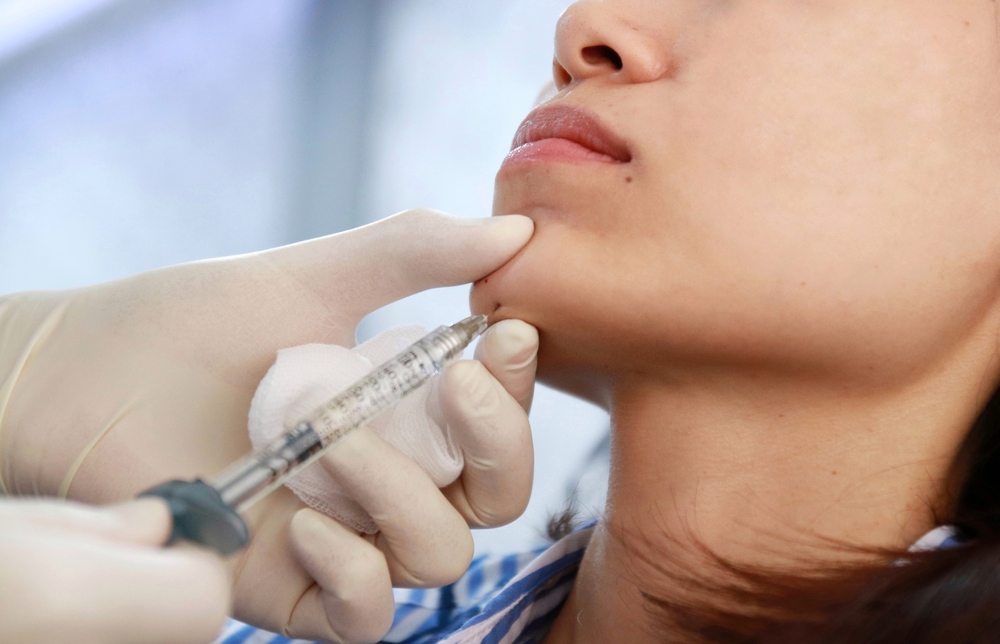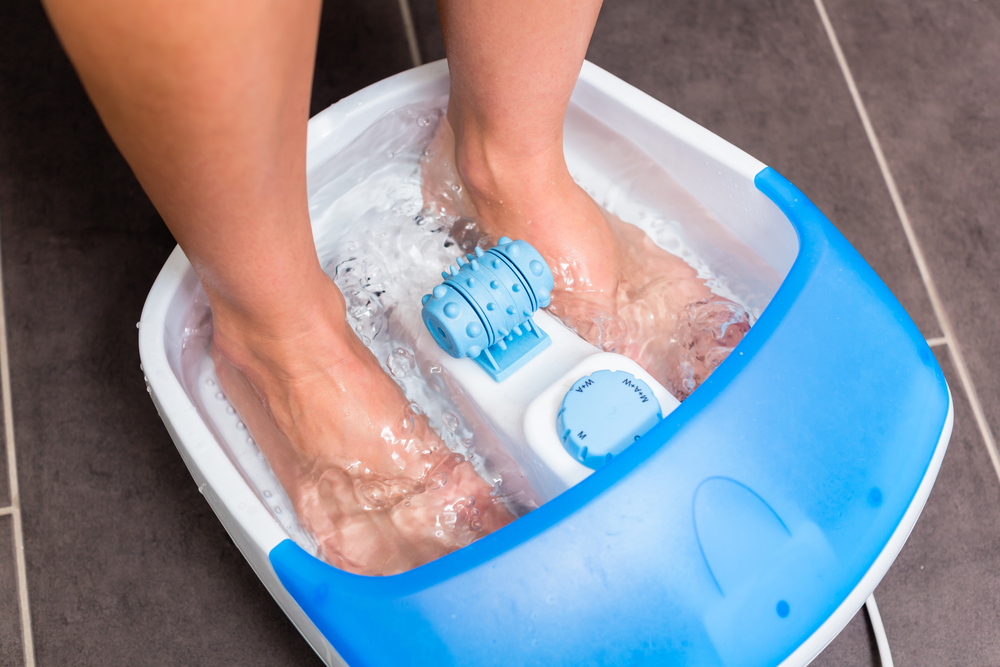- Chin augmentations can be performed using fillers, or via plastic surgery.
- Surgeries are on the decline, partially because of the rise of fillers that can alter the appearance of the chin.
- Chin fillers change the look of the chin temporarily and may be used as a trial for surgery.
- Surgery is the only way to get permanent results. It also allows doctors to customize the look of the chin.
When it comes to striking facial features, you typically wouldn’t think the chin would be at the top of anyone’s list. But according to the American Society of Plastic Surgeons (ASPS), over 16,000 people had surgical chin augmentation (mentoplasty) in 2016. Although the procedure is on the decline — 4 percent more patients had the surgery performed in 2015 — there’s no indication people have lost interest in getting cosmetic work done to this area of the face.
On the contrary, what it signifies is that more and more patients are instead seeking alternatives to the surgical procedure.
The basics of chin augmentation
The most common reason to get any sort of chin enhancement is to correct what’s known as a “recessive” or “weak” chin.
If your facial profile is asymmetrical — especially if your chin recedes inward, throwing off the balance of your nose and forehead — a chin augmentation procedure can help give your facial structure a more harmonious appearance. Traditionally, a plastic surgeon would correct this issue via surgical implants or a manipulation of the mandible (jaw bone).
Besides the appearance of a perfectly balanced and chiseled facial profile, you can use chin augmentation to play down the appearance of a double chin. That super-frustrating pocket of fat that hangs below the chin can be concealed by creating more projection, definition and balance to the face via chin augmentation.
Many people also now pair chin surgery with a nose job to ensure that their facial features are balanced after the procedure.
There are several other reasons why a candidate may choose chin augmentation surgery or opt for one of the non-surgical methods. If you have a pointed or square chin and want to achieve a more rounded profile, doctors may round the chin via osteotomy, or chin implant surgery. These techniques can also be used to correct a pointed or square chin, or to downplay a pointy or overly prominent nose.
Besides fillers and surgery, there are a couple other alternatives available for those seeking a more commanding profile. Some doctors recommend submental liposuction — the removal of fatty tissue from the neckline — in order to make the chin appear more prominent and to remove a double chin. Cosmetic dentistry is also an option, as alterations to the teeth can enhance the strength of the chin and jawline.
Chin fillers: Liquid chin augmentation
If a strong chin is what you’re after, but going under the knife seems too daunting, then you’re probably a good candidate for non-surgical chin enhancement.
When you opt for this procedure, a facial plastic surgeon will typically inject small amounts of hyaluronic acid dermal fillers — oftentimes Juvéderm, Voluma, or Radiesse — into the chin and cheeks to help define the chin and jawline. You can opt to have a local anesthesia applied to the area for a more comfortable injection experience.
One of the best things about using this non-surgical procedure is that there’s almost no recovery period involved. Patients may experience minor swelling, dull aching or slight bruising in the treated area, but most people report that these side effects are minimal and completely disappear within a few days after the procedure.
Chin fillers only last between nine and 12 months at a time, however, so regular upkeep is essential — although some surgeons will use a small Botox injection in the chin to help the filler last longer.
Chin enhancement surgery
Unlike dermal fillers, chin enlargement is designed to be a permanent solution to treating a weak or recessed chin. According to the American Academy of Facial Plastic and Reconstructive Surgery (AAFPRS), during a chin implant surgery, a plastic surgeon will make a small incision in the natural crease line under the chin or inside the mouth where the gum meets the lower lip. He or she will then stretch the tissue and insert the implant.
The implant is placed directly in front of the jawbone, which helps to define the chin as well as the jaw. Chin implants are typically made of Gore-Tex or silicone and come in various shapes and profiles.
When you have an initial consultation with your board-certified plastic surgeon, he or she will help you decide which shape is best for your particular goals, and which will help you achieve the most natural look. Some people don’t require implants at all if their doctor is able to move the jawbone forward in a procedure called mentoplasty or genioplasty.
The best part about chin augmentation surgery is that, unlike fillers, it’s permanent. On the downside, with every surgical procedure comes complications. Extreme cases of bruising, swelling, and numbness can occur for up to six weeks after surgery, and there have been cases of implant migration that must be corrected with additional surgery. What’s more, there’s a higher risk of infection and minor nerve damage with chin surgery.
Chin fillers vs. surgery: pros and cons
So now that you know the basics of chin enhancement surgery and chin fillers, which one’s best for your particular needs? Just like any cosmetic procedure or injection, there are pros and cons that should be addressed before you go under the knife or needle. Cost, recovery period, effectiveness and results should all be taken into account before you book any procedure.
Chin filler pros
- Minimal recovery period — Patients are able to immediately return to work and have almost no downtime. Only minor side effects are reported.
- It doesn’t take long — The procedure can be performed in under 15 minutes, making it the perfect “lunch break” cosmetic procedure.
- There aren’t many risks — So long as your doctor uses FDA-approved fillers, there’s only a minor chance you’ll experience any significant side effects. Most patients only report minor swelling and bruising for a short period of time after injections.
- Can be used as a “trial” — If you’re seriously considering chin enhancement surgery, chin fillers are a good way to try a stronger or larger chin on for size.
Chin filler cons
- It’s temporary — Most chin fillers only last between nine and twelve months, so if you want to maintain your perfectly-sculpted chin, you’ll need to go for repeat sessions. A complete chin enhancement can be performed every nine to twelve months with two sessions.
- It’s more expensive overall — Compared with surgery, fillers are almost always more affordable at the outset, but regular injections eventually rack up the price. A complete chin filler session typically costs between $1,000 and $2,000 and lasts for a year at most.
Chin surgery pros
- It’s permanent — Unlike dermal fillers, chin enhancement surgery is a “one-and-done” deal. Unless you have a serious complication — which is relatively rare — only one procedure will last a lifetime.
- You can customize your results — Before you have chin implant surgery, you’ll be able to sit down with your doctor to discuss different sizes, shapes and materials for your new chin. Compared to fillers, chin surgery patients have many more options for custom results.
- It’s good for those with severe cases — Those with extreme cases of chin recession or extremely weak chins will get better results with implants, since there are many different sizes and shapes available.
- It’s more affordable in the long run — According to the ASPS’ 2016 report, the average cost of chin surgery is $2,225. If budget and permanence are your primary concern, chin surgery is likely the better option.
Chin surgery cons
- There are more risks — Like any surgery, general anesthesia and incisions equal more risks. Those who undergo the procedure may experience numbness and pain for several weeks, plus swelling and bruising. Infection and implant migration are rare but also potential risks.
- It requires a recovery period — Chin surgery patients are required to minimize activity and typically have to stay home from work for the first week to 10 days after surgery. What’s more, they must wear a facial dressing and eat only soft food for several days.









